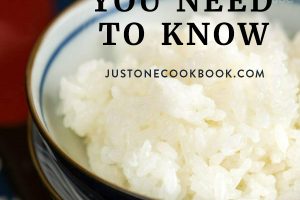Discover the different types of Japanese rice, where to buy the best brands, and how to store your rice so it stays fresh longer. In this guide, I’ll also show you how to choose high-quality rice that’s perfect for making authentic Japanese meals at home.
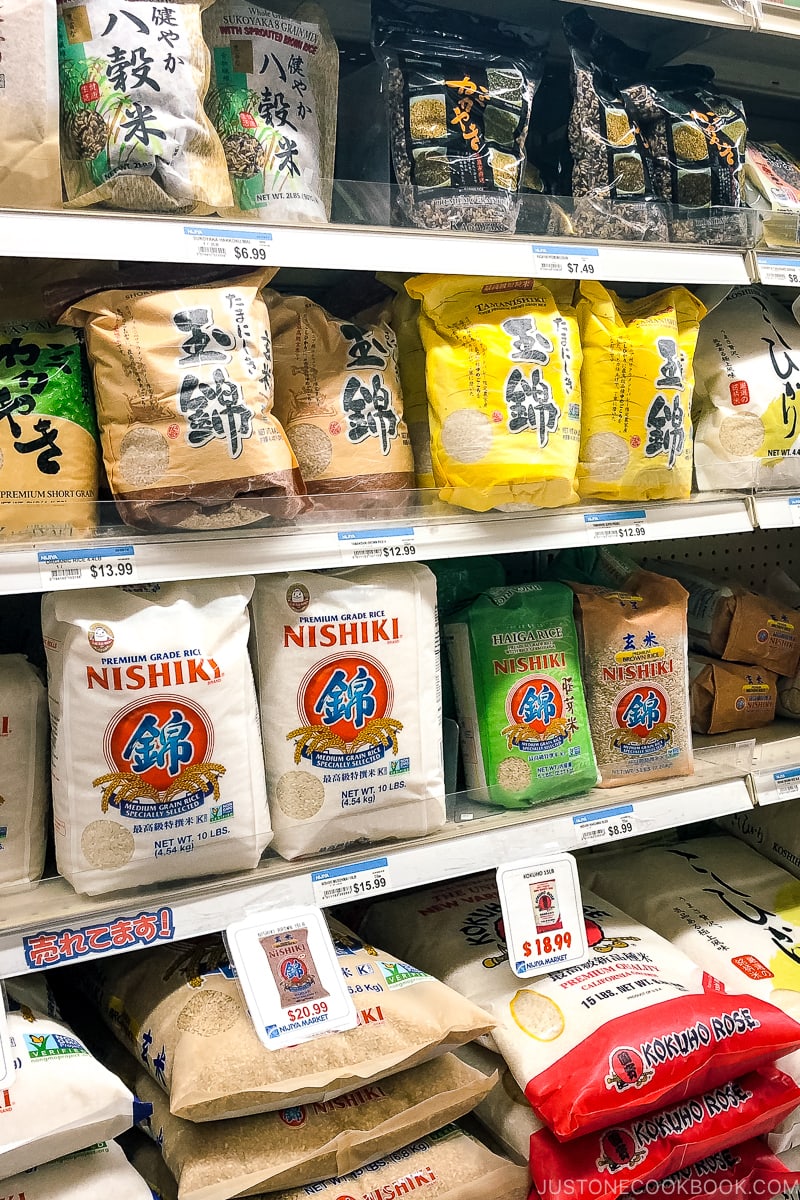
Rice is the foundation of Japanese cuisine. It’s loved for its pearly surface, slightly sticky texture, subtle sweetness, and versatility. Whether you’re just starting to cook Japanese food or making sushi for a special occasion, learning about Japanese rice is the first and most important step.
In this guide, I’ll walk you through the different types of Japanese rice, my favorite brands, where to buy them, and answer the most frequently asked questions.
For detailed tips on cooking and storing rice, check out these helpful guides: How to Cook Japanese Rice in a Rice Cooker, How to Cook Sushi Rice, and How to Store Cooked Rice.
What is Japanese Rice?
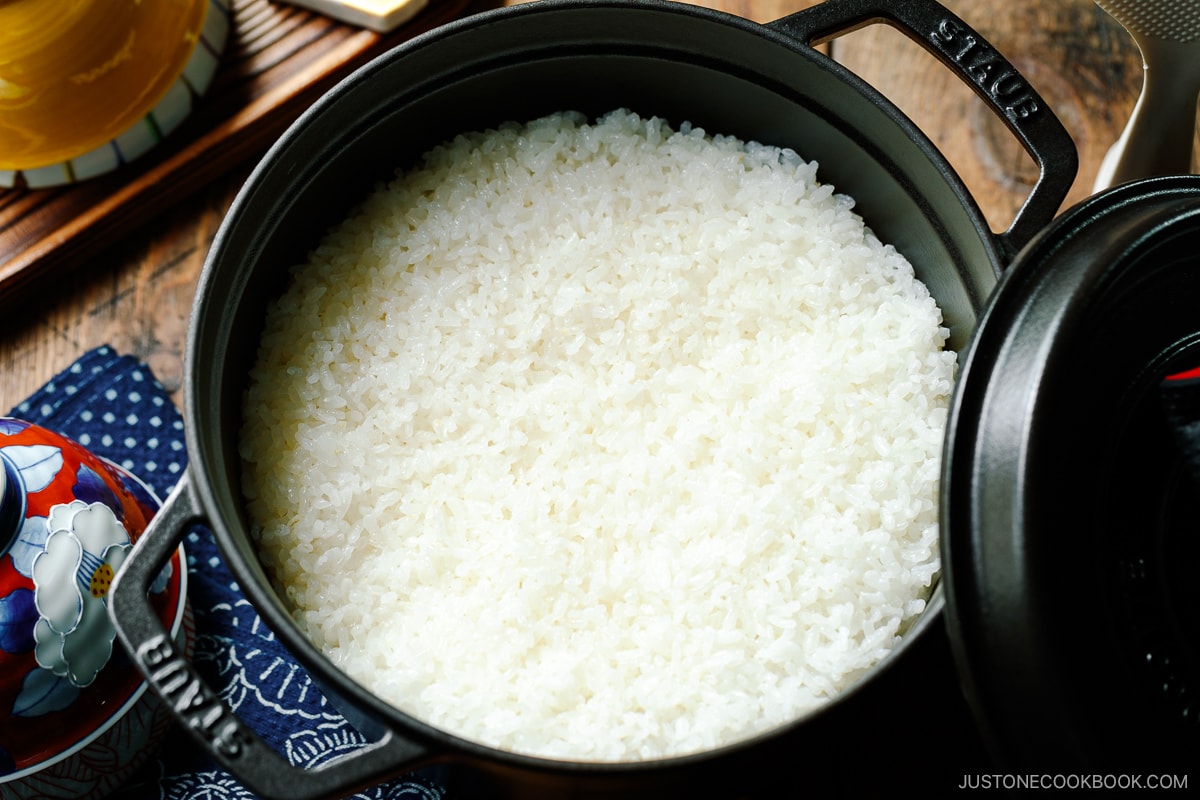
Japanese rice is a short-grain Japonica rice known for its plump, glossy grains and subtle sweetness. Unlike long-grain types like Basmati or Jasmine, it cooks up sticky, tender, and slightly chewy. This texture makes it perfect for everyday meals, sushi, donburi rice bowls, and onigiri (rice balls).
Two Main Types of Japanese Rice
In general, we can group Japanese rice into two main categories in Japan:
1. Standard Japanese rice (Uruchimai)
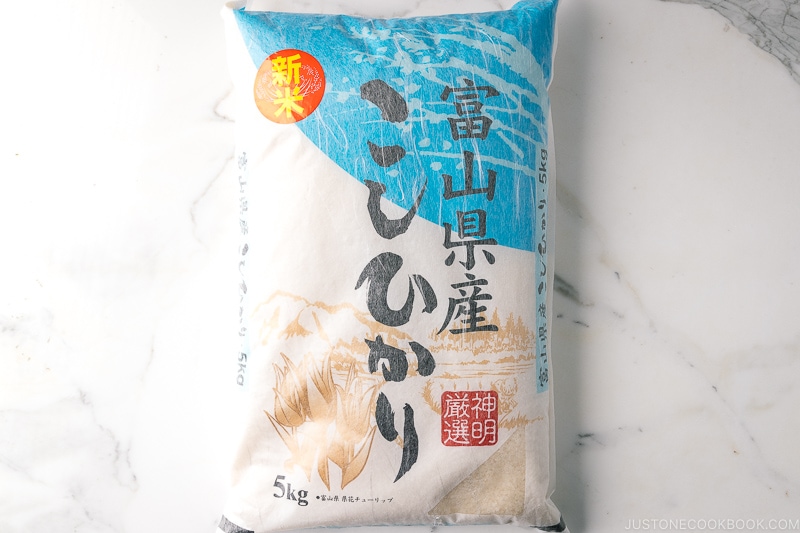
- Short-grain Japonica rice (短粒種)
- Common varieties include Koshihikari, Akitakomachi, Hitomebore, Nanatsuboshi, Sasanishiki, and Tsuyahime.
- Commonly eaten in everyday meals — Once cooked, we call it gohan (ご飯), and serve it as a staple—often in ichiju sansai (one soup three dishes). We serve gohan in different ways depending on the dish—shaped into onigiri, paired with Japanese curry, or served in a donburi bowl.
- Essential for sushi rice — We make sushi rice by seasoning gohan with rice vinegar, sugar, and salt
- Also used in making sake and rice vinegar
- It comes in several types — Polished white rice, brown rice (genmai), haiga rice (with the germ intact), GABA rice (germinated brown rice), and pre-washed rice (musenmai).
If you’re curious about the different varieties of Japanese rice (e.g., haiga rice, GABA rice), check out our post on Types of Japanese Rice.
2. Japanese sweet rice or glutinous rice (Mochigome)
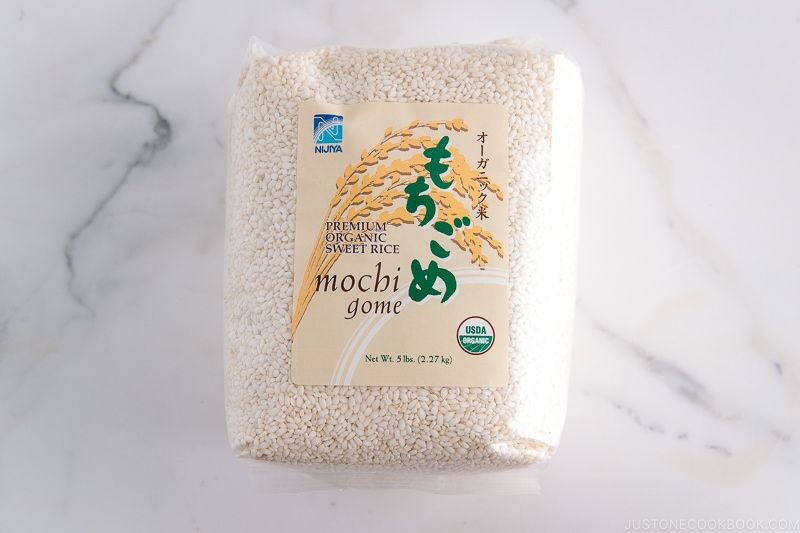
- Stickier, chewier, and more glutinous than standard Japanese rice (uruchimai)
- Essential for making mochi (rice cakes), wagashi (traditional Japanese sweets), and Sekihan (Azuki Red Bean Rice)
- Not suitable for everyday steamed rice—it’s too sticky for regular meals
What about Medium-Grain Rice?
- In Japan — Home cooks don’t use medium-grain rice. However, schools, restaurants, and catering services may use it to cut costs. Some packaged rice products also mix in medium-grain rice to balance texture and reduce the price.
- In the U.S. — Many Japanese American households eat Californian-grown Calrose rice. It’s widely available in supermarkets and Asian stores. Popular brands include Botan, Kokuho Rose, Nishiki, and Sho-Chiku-Bai.
- In Australia — SunRice Medium Grain is an Australian-grown medium-grain rice with good stickiness, suitable for Japanese-style meals.
- Other regions — Look for labels like “Sushi Rice” “Calrose” or “Japonica” and choose rice grown in California, Spain, or Australia—these tend to have better texture for Japanese dishes.
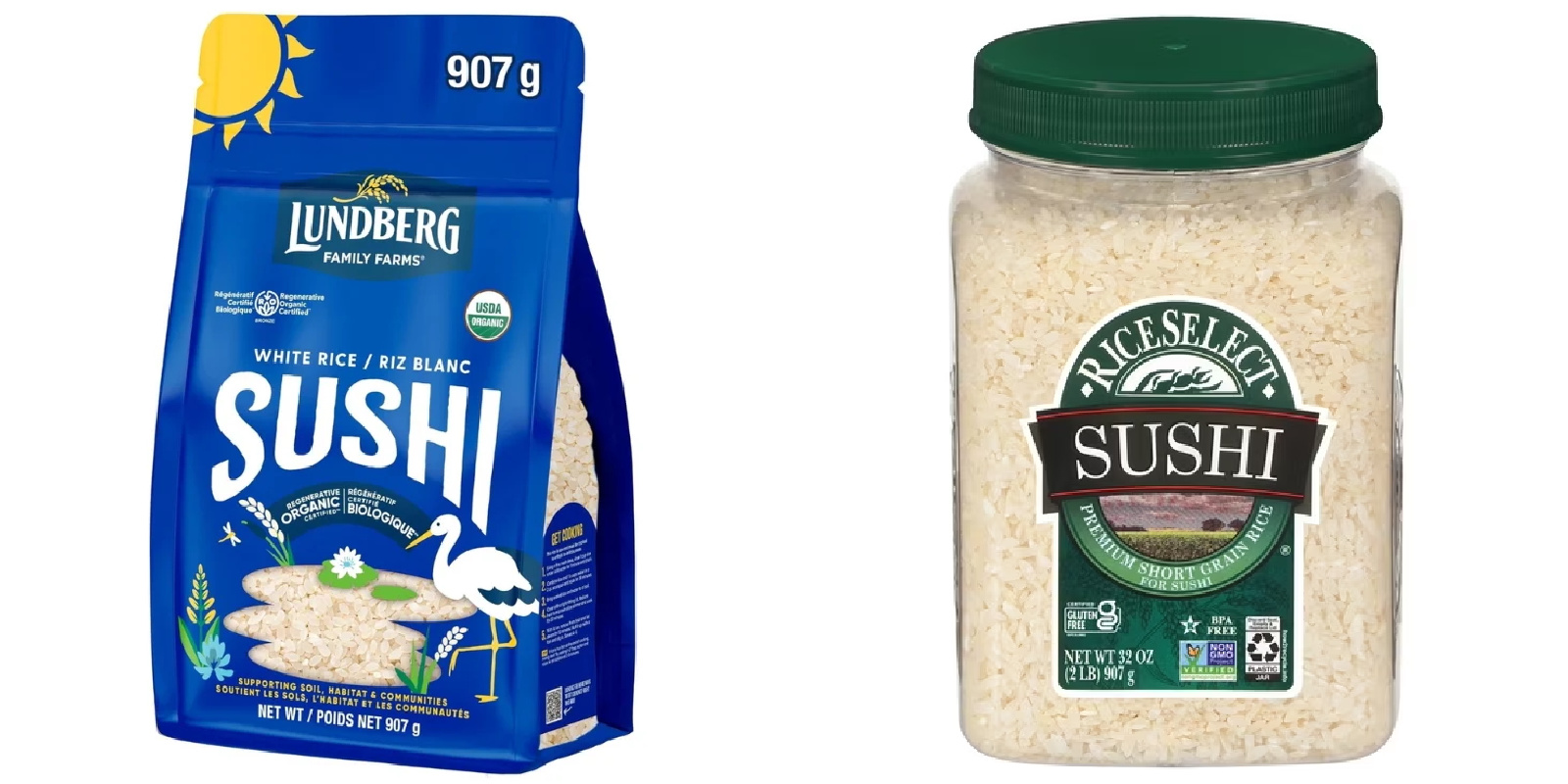
In Japan, “sushi rice” refers only to cooked rice seasoned with vinegar, sugar, and salt for making sushi (Here’s my post on How to Cook Sushi Rice). It’s not the same as the uncooked, pre-labled “sushi rice” sold in packages overseas.
Sticky but Not Glutinous: Understanding Japanese Rice
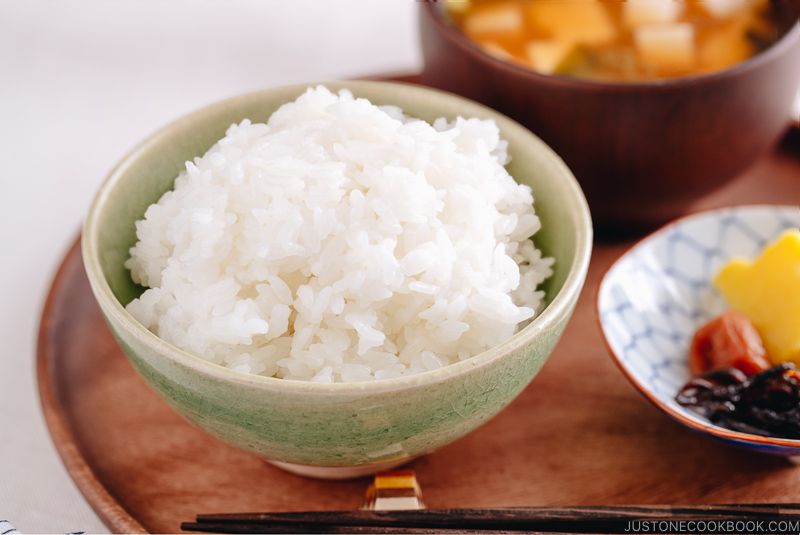
Japanese rice is naturally sticky because it has a lot of amylopectin and very little amylose. These are two types of starch that affect how rice cooks. More amylopection = more stickiness.
Other Factors That Affect Stickiness:
- Rice varieties — Types like Koshihikari, Hitomebore, and Akitakomachi are bred to be shiny, tender, and sticky.
- Shinmai (新米) — Freshly harvested rice, called shinmai, contains more moisture. It tends to be stickier and more fragrant.
- Rinsing and soaking — Washing and soaking the rice before cooking helps remove extra starch and improve texture.
Note: People sometimes use the term “sticky rice” to describe rice with a sticky texture. However, in many Asian cultures, “sticky rice” refers specifically to glutinous rice or Japanese sweet rice (mochigome), like Thai sticky rice.
While Japanese short-grain rice is stickier than long-grain types like Jasmine or Basmati, it is not the same as true glutinous rice.
Where to Buy Japanese Rice
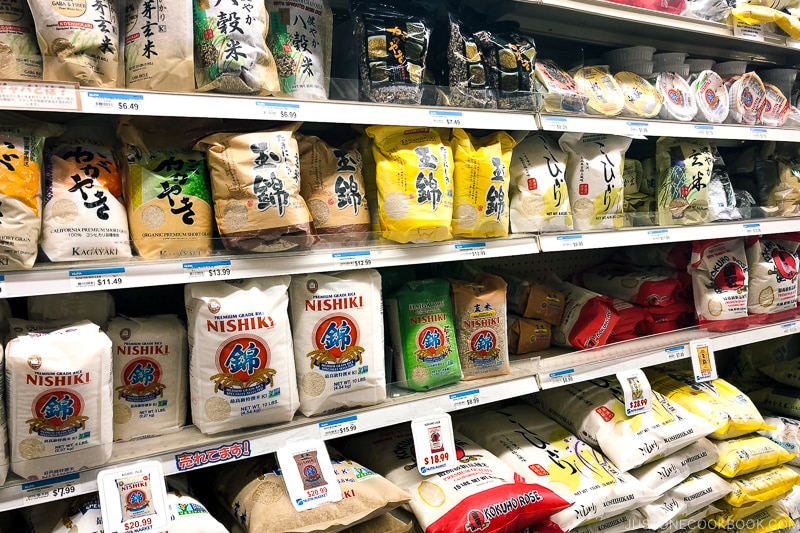
You can find Japanese rice at:
- Online retailers and specialty stores
- Japanese grocery stores (e.g., Nijiya, Mitsuwa, Tokyo Central, Marukai Market)
- Asian grocery stores (e.g., H-Market, 99 Ranch)
- Mainstream stores (e.g., Walmart, Costco, Whole Foods, and Target)
- Our curated grocery list on Just One Cookbook Amazon Storefront
Best Japanese Rice Brands
Short-Grain Rice
My Recommendation:

Having eaten Japanese rice all my life, I recommend Koshihikari Rice from Toyama Prefecture (photo above), available at Nijiya Market.
Rice farmers first developed Koshihikari in Uonuma (魚沼), a region in southern Niigata Prefecture. With its cool climate, clean mountain water, and fertile soil, the area offers ideal conditions for growing rice. That’s why many people consider Uonuma Koshihikari the gold standard of Japanese rice and rank it best in the country.
Along with Uonuma, Toyama is also known for producing premium Koshihikari. We usually pick it up when it’s on sale at our local Japanese market. When cooked properly— especially in a donabe clay pot—you can tell the difference right away. The rice turns out glossy, fragrant, naturally sweet, and incredibly satisfying!
Other Recommended Brands:
- Shirakiku Koshihikari Rice (California-grown short-grain Koshihikari)
- Tamaki Gold (California-grown short-grain Koshihikari)
- Tamanishiki Super Premium Short Grain Rice (a blend of California-grown short-grain Koshihikari and Yumegokochi)
- Lundberg Organic Sushi Rice (California-grown short-grain Japanese-style white rice)
Medium-Grain Rice
Brown and GABA Rice
Tips for Buying & Storing Japanese Rice
Here are my tips for buying high-quality Japanese rice and keeping it fresh at home.
- Look for short-grain or Japonica rice — this is the standard type used in Japanese cooking. If you can’t find it, look for “medium-grain,” “Calrose,” or “sushi rice.”
- Check the harvest date — Fresher rice tastes better! Look for labels indicating new crop (新米, shinmai), which denotes the freshest harvest.
- Variety — I always choose Koshihikari variety for its glossy, plump grains, ideal stickiness, subtle sweetness, and versatility in both everyday dishes and sushi. But you can check other varieties here.
- Know the origin — Premium regions like Uonuma (Niigata) or Toyama are known for high-quality Koshihikari rice.
- Choose the trusted brands — Be familiar with recommended brands or brands you’ve tried once.
- Buy only what you’ll use within a month to ensure freshness.
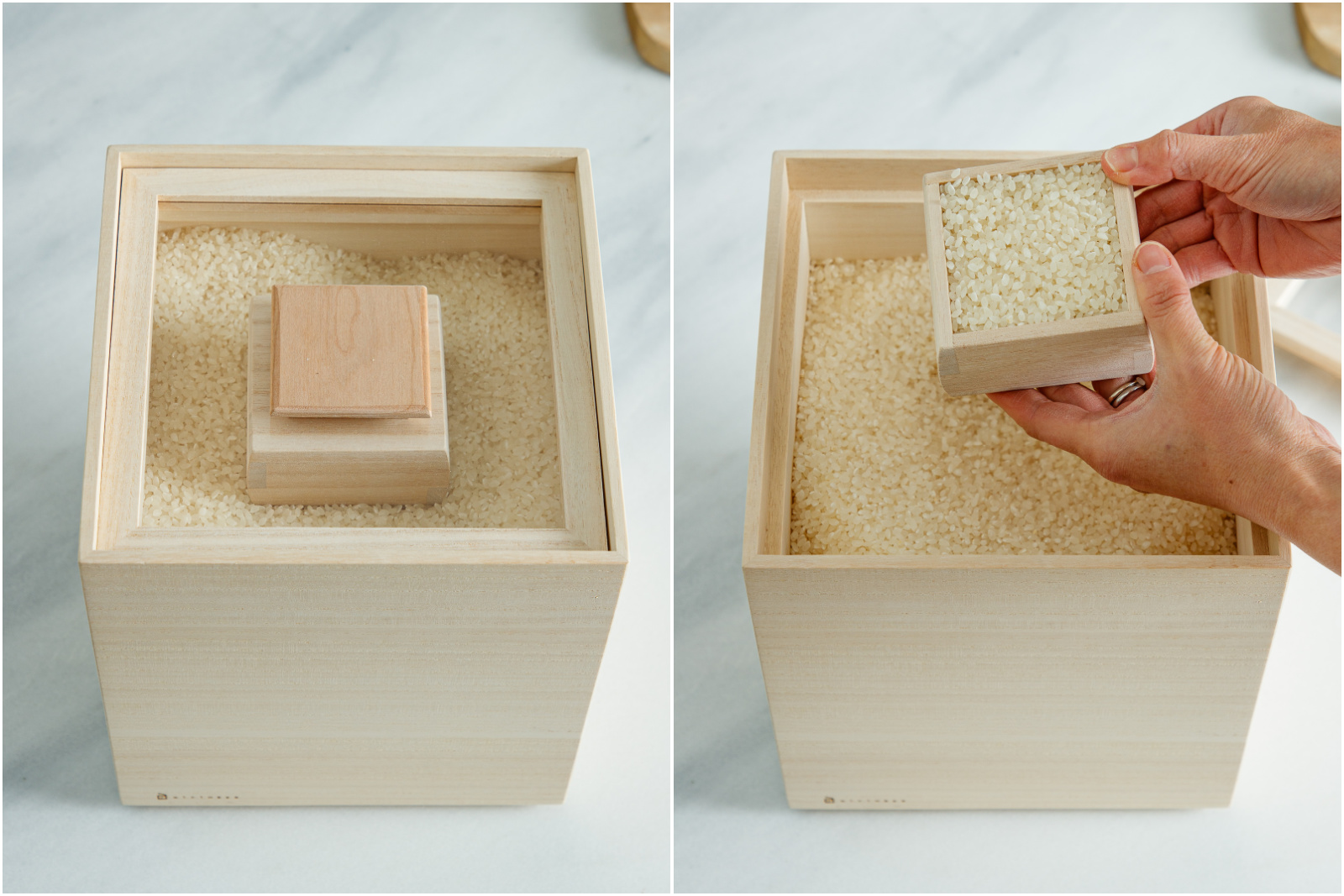
- Store in an airtight container. I now store my rice in a Paulownia Wood Rice Container, which naturally regulates humidity and resists insects to keep it fresh!
- Keep in a cool, dry pantry away from sunlight and heat.
Frequently Asked Questions
Sushi rice is Japanese short-grain rice seasoned with rice vinegar, sugar, and salt. It’s the same rice—just prepared differently for sushi.
Yes, Korean short-grain rice is very similar in texture to Japanese short-grain rice. It’s slightly less sticky but still tender and glossy, making it a great substitution in most Japanese dishes.
No. Jasmine rice is a long-grain variety that’s light, fluffy, and fragrant—but it lacks the stickiness needed to hold sushi together. For authentic sushi texture and taste, it’s best to use Japanese short-grain rice, which is naturally sticky and slightly sweet.
Calrose rice is a medium-grain Japonica rice grown in California. Many people outside of Japan use it as a substitute for Japanese rice. While it’s not as sticky or glossy as true Japanese short-grain rice like Koshihikari, it still has a soft texture and mild flavor—making it a good option for everyday meals, or even sushi in a pinch.
Yes, all Japanese rice—both white and brown varieties—is naturally gluten-free and low in fat. If you’re looking for extra fiber and nutrients, brown rice or GABA rice (germinated brown rice) is a great choice.
Rice naturally absorbs more arsenic from soil and water than other grains, but the levels in Japanese rice and California-grown Japonica rice (like Calrose or Tamaki Gold) are generally low and safe when eaten as part of a balanced diet.
If you’re managing diabetes, it’s best to choose whole grain options like brown rice, GABA rice, or Haiga rice. These have a lower glycemic index and provide more fiber.
Editor’s Note: This post was originally published on November 18, 2018. It was updated on March 24, 2022, and republished with more helpful information on August 3, 2025.



